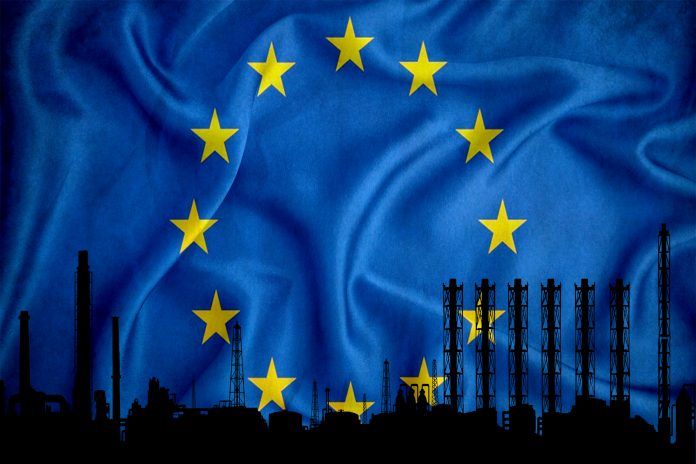Kadri Simson, EU Energy Commissioner, discusses why the EU has placed energy and the heart of its decarbonisation efforts
While 2020 was a particularly difficult year in so many senses, it finished with one positive note – when EU leaders agreed to reduce greenhouse gas emissions in the EU by 55% by 2030. From a political and economic point of view, this is extremely important because it sets the clear direction for the coming decade. And it adds an extra urgency, underlining that we need to speed up our action.
By chance, the agreement came exactly 12 months after this Commission presented the European Green Deal outlining a comprehensive effort at EU level to become climate-neutral by 2050. This is, therefore, a good moment to highlight some of the initiatives that the Commission has launched in 2020 in anticipation of this firm commitment by Member State leaders.
The energy sector will play a crucial role in achieving our ambitious climate targets – both for 2030 and 2050. Let’s not forget that 75% of EU emissions come from the energy sector. Reaching our climate goals will mean creating a more modern and sustainable energy system.
Renewable energy
We are already making progress, with the power sector leading the way. This is the sector where renewables could be deployed quickest, driving significant cost reductions and reaching a share beyond 30% already today.
More work needs to be done to scale up the use of renewables. To facilitate this the Commission recently published a new strategy for Offshore Renewable Energy, highlighting the enormous potential for expanding production at sea – in the five vast sea basins of the EU.
We are already world leaders for offshore wind – not just in terms of production, but also in terms of patents and manufacturing. At the same time, there are significant opportunities for growth in new offshore technologies – such as tidal energy, wave energy, or floating wind turbines.
We are well-positioned, as the EU is the global technological leader in ocean energies. In 2018, EU countries represented eight out of the top ten global exporters in this area. EU companies hold 66% of the patents in tidal and 44% in wave energy and all ocean energy projects in the world today use EU technology.
The offshore renewable energy strategy outlined an aim of achieving an installed capacity of at least 60 GW of offshore wind and at least 1 GW of ocean energy (wave, tidal, photovoltaic, etc) by 2030. Looking further ahead, we have set our sights on 300 GW of offshore wind and 40 GW of ocean energy across our basins by 2050.
To get to the levels of offshore renewable energy that we are seeking we need to change the entire system surrounding offshore energy in Europe.
We need to make it easier for renewables to be integrated into the grid. We need to make the grids more flexible – onshore, offshore, cross-border. We also need to go beyond electricity and consider all aspects of the energy system.
Energy System Integration
Earlier in the year, the Commission presented a strategy for Energy System Integration. This highlights the importance of greater flexibility in all energy sectors and all parts of the supply chain. In order to achieve climate neutrality, we must rethink and renew our energy system: looking at it as a whole, exploiting synergies and finding cost-effective solutions for our households and businesses.
This rethinking includes of course also the gas sector and I am happy to see that the sector is stepping up to the challenge.
The future role of the gas sector will depend on its capacity to keep pace with these changes and renew its thinking. Today, natural gas makes up for around one-quarter of our energy mix. In the future, the position of the gas sector will depend on if and how quickly it can move away from fossil sources and towards renewable and low carbon gases.
Decarbonising is the only viable way forward for the sector in the longer term. In this context, hydrogen has the potential to be a game-changer. That is why in July we put forward our Hydrogen strategy, which will drive the decarbonisation of the gas sector.
Trans-European Networks for Energy
All of these new initiatives come with a range of building blocks. On December 15, we came forward with our first legislative proposal in our Green Deal agenda for the energy sector – revising the Regulation on the Trans-European Networks for Energy (TEN-E).
Infrastructure is the backbone of our energy supply and the first area where better synergies and integrated planning can make a difference. Our proposal will align our policy for cross-border energy infrastructure with the European Green Deal. This means, for example, no longer supporting natural gas and oil pipelines and assessing the sustainability of all projects that could receive EU funding under TEN-E. The revision also introduces support for hydrogen infrastructure and a stronger focus on offshore grids, to further facilitate the green energy transition.
As I said at the start, 2020 was a difficult year. But it was also an important year in taking essential steps towards climate neutrality. I enter 2021 confident that we can make further strides forward and step up to the challenges ahead.











